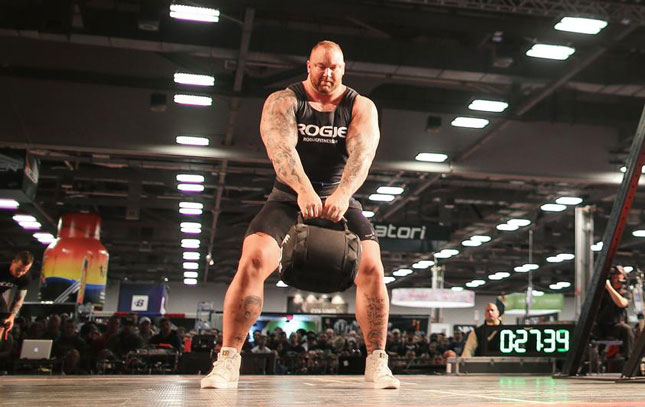Introduction
Force production, the essential ability to generate muscular force, is a core component of virtually every athletic endeavour. It is what propels a sprinter off the blocks, powers a weightlifter through a snatch, and drives a swimmer through the water. This blog post discusses two critical aspects of force production: maximal force production and the rate of force production. By highlighting the difference between these two, we aim to provide fitness coaches with the knowledge to observe, prescribe, and adjust exercises more effectively, ensuring their clients can achieve peak performance safely and efficiently.
Understanding Force Production in Fitness

At the heart of understanding athletic performance lies the distinction between two fundamental types of force production: maximal force production (MFP) and rate of force production (RFP). Maximal Force Production refers to the absolute maximum amount of force that an individual can generate, regardless of the time it takes to produce that force. This metric is crucial in powerlifting, heavy weightlifting, and other strength-focused disciplines where the primary goal is to lift as much weight as possible, irrespective of speed.
Rate of Force Production, on the other hand, emphasises not just the amount of force generated but also the speed at which that force is developed. It’s a critical measure in sports and activities requiring quick, explosive movements, such as sprinting, high jumps, or fast-paced Olympic weightlifting moves. Understanding these concepts is vital for fitness coaches looking to enhance their clients’ performance across a broad spectrum of physical activities.
Examples in Barbell Training
 When applying the concepts of maximal force production and rate of force production in training, barbell exercises provide clear and accessible examples. For Maximal Force Production, consider the deadlift. The deadlift requires the athlete to lift the maximum possible weight from the ground to a standing position. Here, the focus is on generating the highest force possible to move the weight, irrespective of how quickly this is achieved.
When applying the concepts of maximal force production and rate of force production in training, barbell exercises provide clear and accessible examples. For Maximal Force Production, consider the deadlift. The deadlift requires the athlete to lift the maximum possible weight from the ground to a standing position. Here, the focus is on generating the highest force possible to move the weight, irrespective of how quickly this is achieved.
For Rate of Force Production, power cleans offer a compelling illustration. This exercise demands not only a significant amount of force to lift the barbell from the ground but also necessitates that this force be generated rapidly to transition the weight from the floor to the catch position in a fluid motion. This showcases the need for explosive strength and the ability to produce force quickly, which is essential in many athletic endeavours beyond weightlifting.
The Importance for Fitness Coaches
Why must fitness coaches concern themselves with both maximal force production and the rate of force production? The answer lies in the comprehensive development of an athlete. Different sports and physical activities demand varying balances of strength and speed. By understanding and observing both aspects of force production in their clients, fitness coaches can tailor training programs that precisely target the needed areas of improvement.
 For instance, a rugby football player may benefit more from focusing on maximal force production to overpower opponents, until they are too slow, then increasing the rate of force production will help. While a basketball player might need to enhance the rate of force production for quick jumps and sprints more than they would focus on maximal force production. Recognizing the difference also prevents injury by ensuring that exercises are prescribed with an understanding of what the athlete’s body is presently capable of and what it is being trained to accomplish next. This tailored approach ensures that every athlete can reach their peak performance, safely and effectively.
For instance, a rugby football player may benefit more from focusing on maximal force production to overpower opponents, until they are too slow, then increasing the rate of force production will help. While a basketball player might need to enhance the rate of force production for quick jumps and sprints more than they would focus on maximal force production. Recognizing the difference also prevents injury by ensuring that exercises are prescribed with an understanding of what the athlete’s body is presently capable of and what it is being trained to accomplish next. This tailored approach ensures that every athlete can reach their peak performance, safely and effectively.
Training Methods for Adaptations
To enhance both maximal and rate of force production in athletes, fitness coaches can employ a variety of training methods tailored to achieve specific adaptations. For improving maximal force production, incorporating heavy resistance training is key. Exercises such as squats, deadlifts, and bench presses, executed with high loads and fewer repetitions, force the muscles to adapt by increasing their maximal strength capacity.
On the flip side, to boost the rate of force production, plyometric exercises, sub-loaded explosive tools like the medicine ball, or Sandbag, and weightlifting movements (like the snatch and clean & jerk) are highly effective. These exercises demand rapid force generation, enhancing an athlete’s explosive strength and power. Furthermore, integrating sprint drills and agility training can also improve an athlete’s ability to quickly generate force, crucial for many sports and physical activities.
Combining these training methods into a balanced program allows fitness coaches to develop athletes who are not only strong but also quick and agile, capable of producing force in a variety of demanding scenarios.
Want to learn more about this topic?
The Functional Training Institute has an education certificate for just that!
Email us about our Strength & Power coach certification now.
This certification takes you through calculating force and power so you understand when a client may need to switch training styles. You will also learn how to progressively take a client through the Clean, Jerk, and Snatch power exercises using Kettlebell, Dumbbells, and Barbells so power training can occur while skill is being coached.
For for Newsletter
